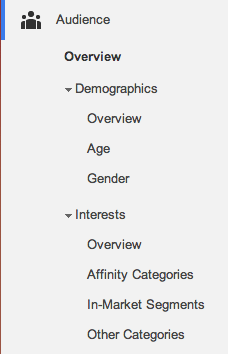In most software businesses, three to four buyer personas account for over 90% of sales. Wouldn’t it be nice to know who they are?
Greater insight into your key buyer personas will allow you to craft more persuasive messaging and content, zero in on the most effective marketing channels, and provide a better customer experience overall.
But how exactly do you create accurate, detailed buyer personas for your software business? In this article, we’re going to share a simple four-step process to do just that.
Before drilling down into specific buyer personas, you first need to establish a good baseline understanding of your current customers.
The goal here is to collect basic demographic and psychographic information about your customers, while watching out for any patterns and trends in the data. This will help you parse out some natural buyer groupings, and suggest some promising target personas. At the same time, the act of gathering this data will push you to think about your customers in more concrete terms, giving you a much clearer focus for the later steps.
There are three especially promising sources of customer information to explore:

To really get into the head of your potential buyers, nothing beats actually talking to them. The next step in the process is to find and recruit interviewees who can give you insight into what drives buyers in your market.
These interviewees typically come from three main groups:
Your existing customers make ideal interviewees, because they’ve already purchased and used your product for some time. Be sure to reach out to customers who love your product, as well as those who don't. While your biggest fans are more likely to represent your ideal buyers, unhappy customers can also shed light on how to improve your product and potentially capture new segments of the market.
These are people who have engaged with your brand in some way – such as downloading an ebook or following you on social media – but who haven’t yet made a purchase. Since these unconverted prospects have nevertheless expressed interest in your solution, chances are good that some of them could be turned into customers with just a few tweaks to your product or messaging. Crafting buyer personas based on their input could help make your value proposition a lot more attractive to them.
Your personal network can probably refer you to many people who could fit into one of your buyer personas, but aren’t yet prospects or customers. Speaking to these people will help a lot with understanding what your various buyer personas are looking for at the very top of the funnel, and what you must do to catch their eye. Start by searching on Linkedin for potential interviewees that you have a mutual connection with, and reach out to your contacts for an intro.
Once you’ve recruited 3-4 interviewees for each target buyer persona, it’s time to conduct the actual interviews.
While the exact interview questions will vary based on your target personas, there are a few key categories of information you need to cover:
By covering these four important categories, you’ll be able to get a comprehensive understanding of the interviewee’s needs and decision-making process, and how your solution fits into the picture.
With the information you’ve gathered from the interview process, you’re finally ready to craft your buyer personas. To be honest, if you’ve done the previous steps correctly, this should be the easiest part of the process.
We’ve already covered the essential components of a strong buyer persona in another article, but the most important elements to include are:
Equipped with this information, you’ll be able to tailor compelling messaging and value propositions that will speak directly to your customers’ most important needs.
If there was ever a fundamental commandment of effective marketing, that would be it. Understanding your customer is absolutely critical to generating more leads and conversions, and well-crafted buyer personas are the key to getting there. Get started today with the four simple steps described in this article, and we bet you’ll be pleasantly surprised with the results.